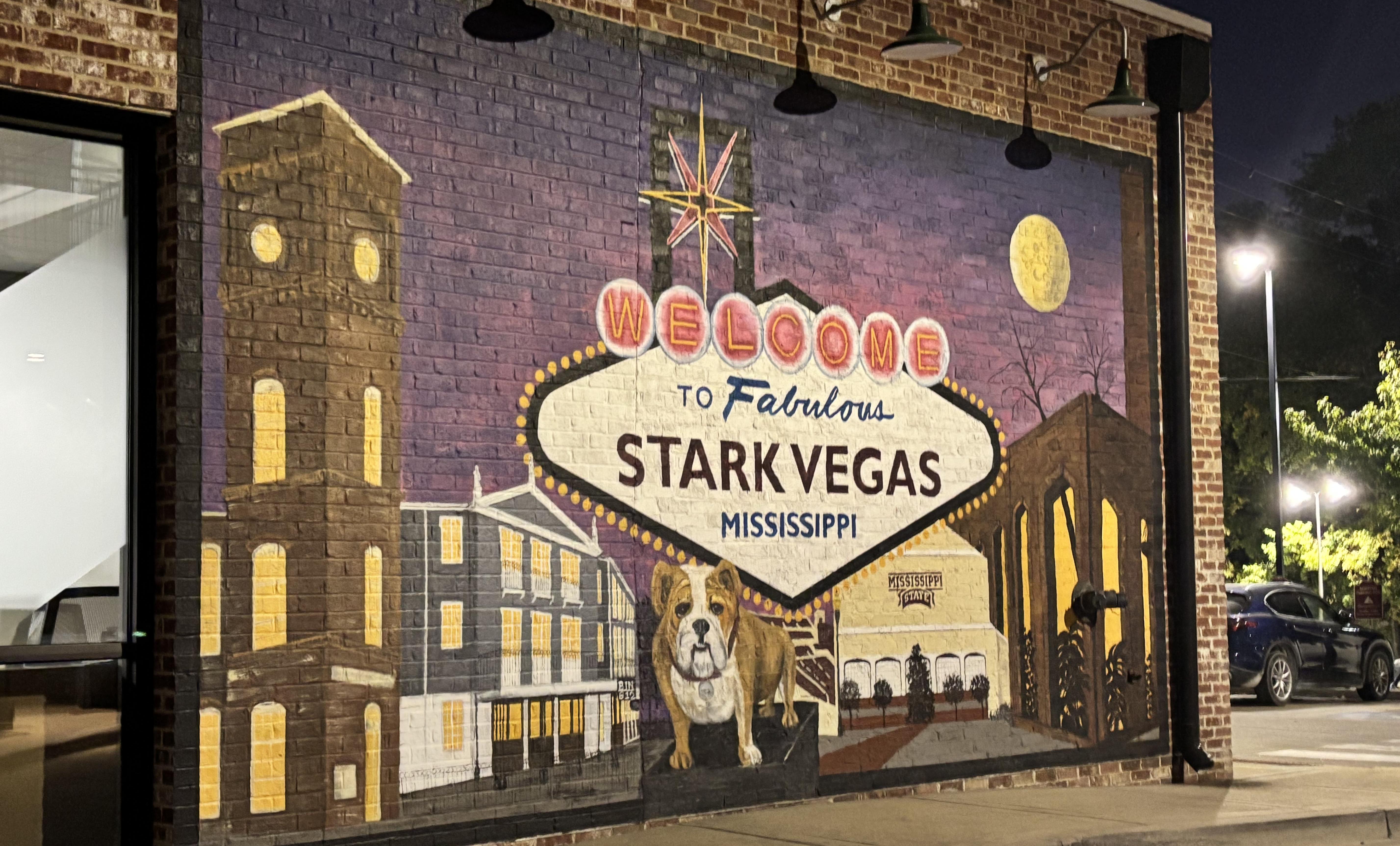21 Stadiums That Look Like They Belong in a Sci-Fi Movie
In the world of architecture, stadiums have evolved far beyond concrete bowls and metal bleachers—they’ve become bold expressions of imagination, engineering, and futuristic design. Some are so striking, they look like they were dropped onto Earth from a sci-fi blockbuster. With glowing exteriors that pulse like alien tech, gravity-defying forms that seem to hover in place, and organic shapes that echo otherworldly landscapes, these stadiums don’t just host events—they transport you to another dimension. Originally a list of 11, we've expanded it to 21 stadiums that truly defy convention. These are not just places to watch a game—they're architectural marvels that feel like portals to the future.
1. Baku Olympic Stadium (Baku, Azerbaijan)

Baku Olympic Stadium is a massive, futuristic ring of light that dominates the Azerbaijani capital’s skyline. The stadium's circular, glowing facade gives it the appearance of a high-tech energy core straight out of a sci-fi epic. At night, dynamic LED displays wrap around its exterior, pulsating with vibrant colors that shift based on the event inside. This ever-changing illumination makes the structure feel alive, like a hovering portal to another dimension. Beyond its mesmerizing exterior, the stadium’s interior is equally advanced. Designed to host both domestic and international events, its seamless integration of smart technology enhances the spectator experience. The smooth, almost gravity-defying shape of the structure evokes comparisons to futuristic space stations or planetary defense outposts seen in science fiction. Whether bathed in blue, red, or a neon hue, Baku Olympic Stadium doesn’t just look modern—it looks like a vision of the future made real.
2. SoFi Stadium (Inglewood, USA)
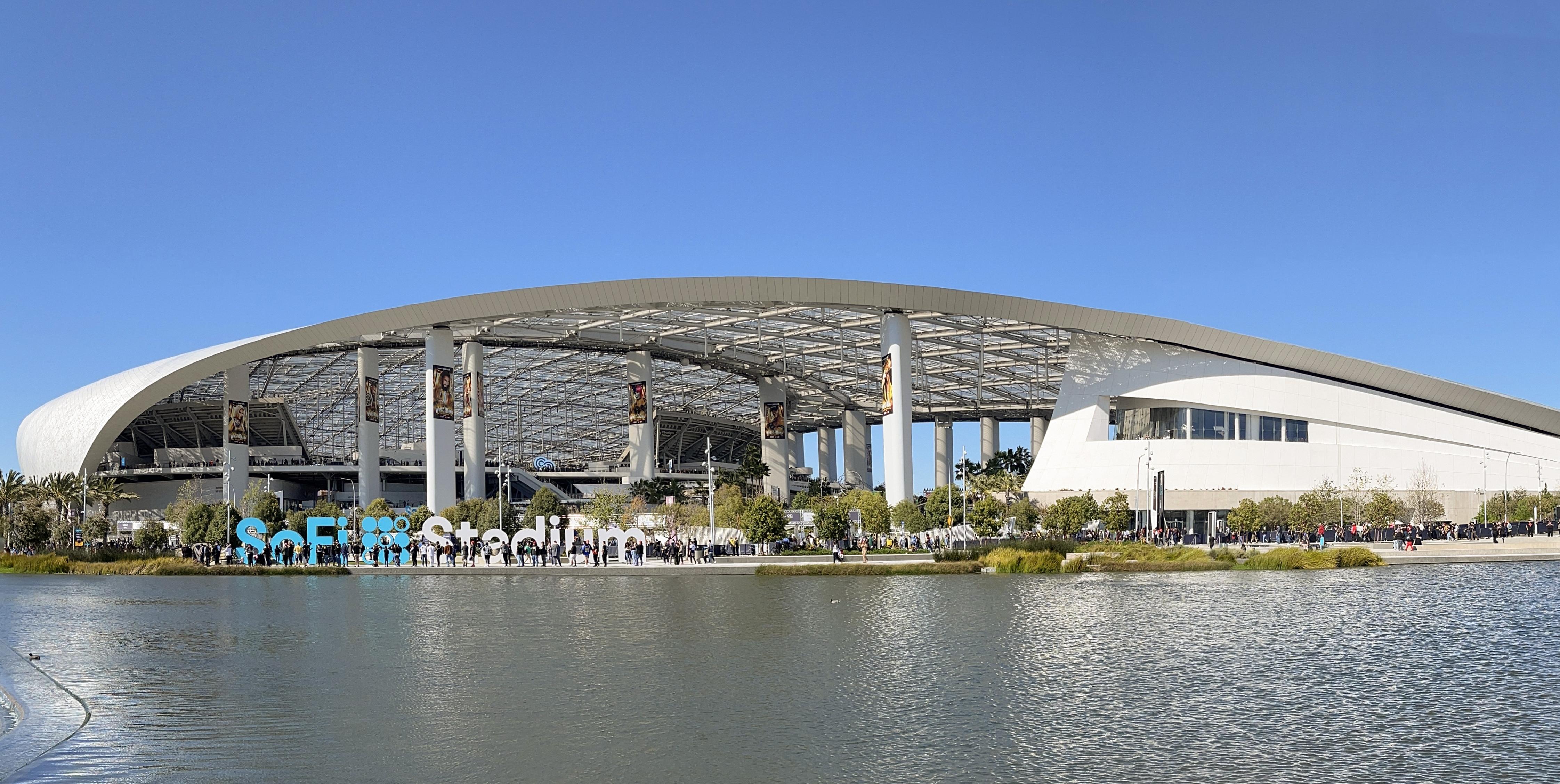
SoFi Stadium is a masterpiece of cutting-edge design, looking more like a cyberpunk metropolis than a traditional sports venue. Its most striking feature is the massive, translucent ETFE (ethylene tetrafluoroethylene) canopy that stretches over the stadium like a sleek force field. This roof, which doubles as a projection screen, creates a dynamic visual experience, allowing the stadium to be illuminated in endless colors and effects, making it look like a scene from Blade Runner 2049. Inside, the innovation continues with the Oculus Infinity Screen—a two-sided, 360-degree video board that hovers over the field like a holographic command center. This screen provides an immersive experience, wrapping spectators in high-definition visuals that make the game feel larger than life. Add to that the stadium’s seamless indoor-outdoor concept, integrated smart technology, and ultra-modern lounges, and SoFi Stadium truly feels like a next-generation entertainment hub—a place that wouldn’t be out of place in a futuristic megacity.
3. Singapore National Stadium (Singapore)
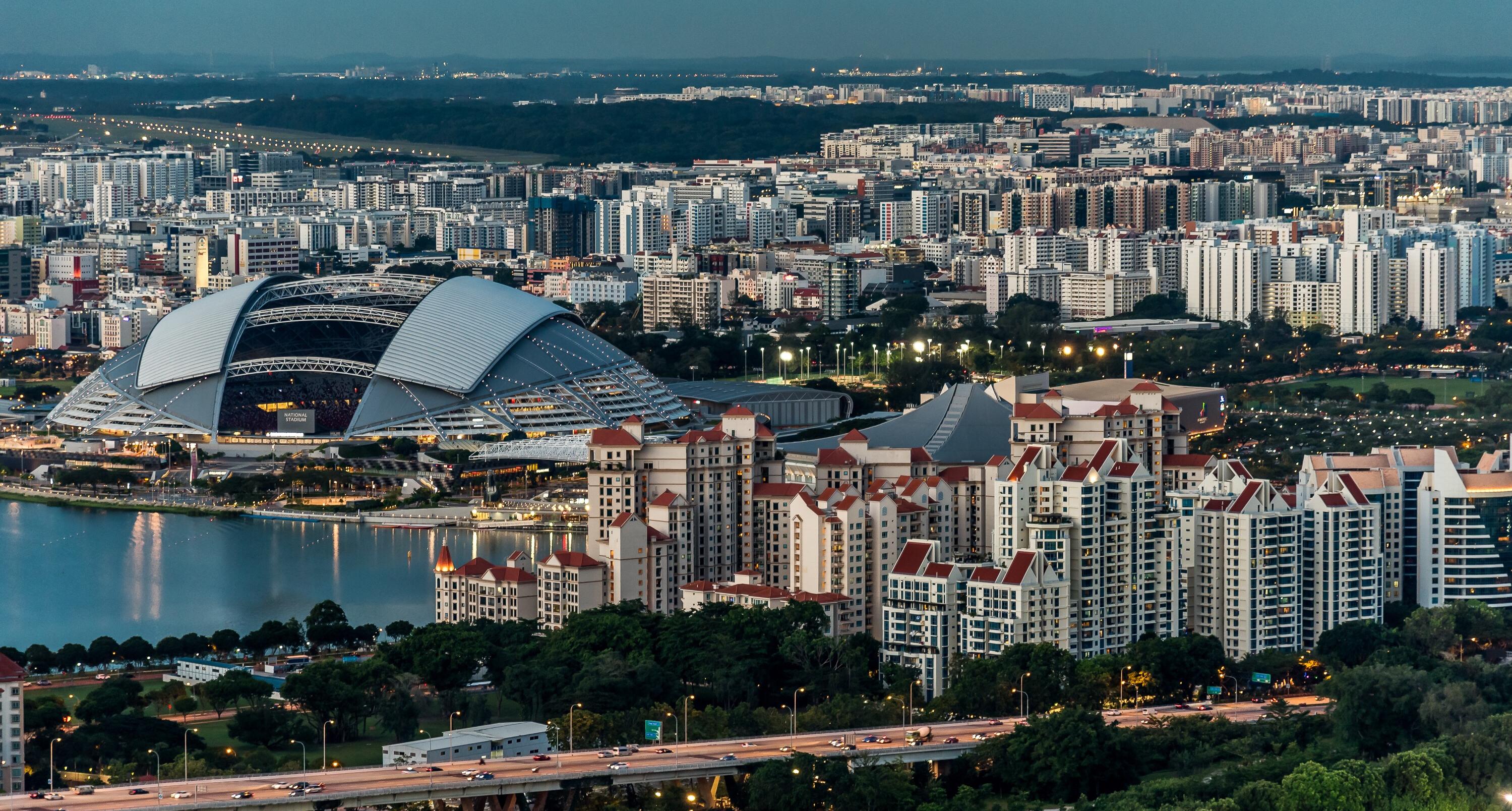
At first glance, the Singapore National Stadium appears to be a colossal UFO that has descended into the heart of the city. Its smooth, metallic dome—the largest free-spanning dome in the world—gleams under the Singaporean sun, creating the illusion of a hovering spacecraft. This sci-fi aesthetic is enhanced by its retractable roof, which opens like a high-tech iris, revealing the sky above and giving spectators the feeling of watching an event inside a futuristic, open-air command center. Beyond its striking appearance, the stadium is a marvel of engineering and sustainability. Its cooling system, which pumps chilled air through individual vents under each seat, feels like a technology borrowed from an advanced alien civilization. The adaptive seating arrangement allows the stadium to reconfigure itself for different events, moving entire sections like modular, robotic structures. When fully illuminated at night, with its geometric panels glowing in programmed light sequences, the Singapore National Stadium looks less like a man-made structure and more like an intergalactic hub preparing for launch.
4. Allianz Arena (Munich, Germany)
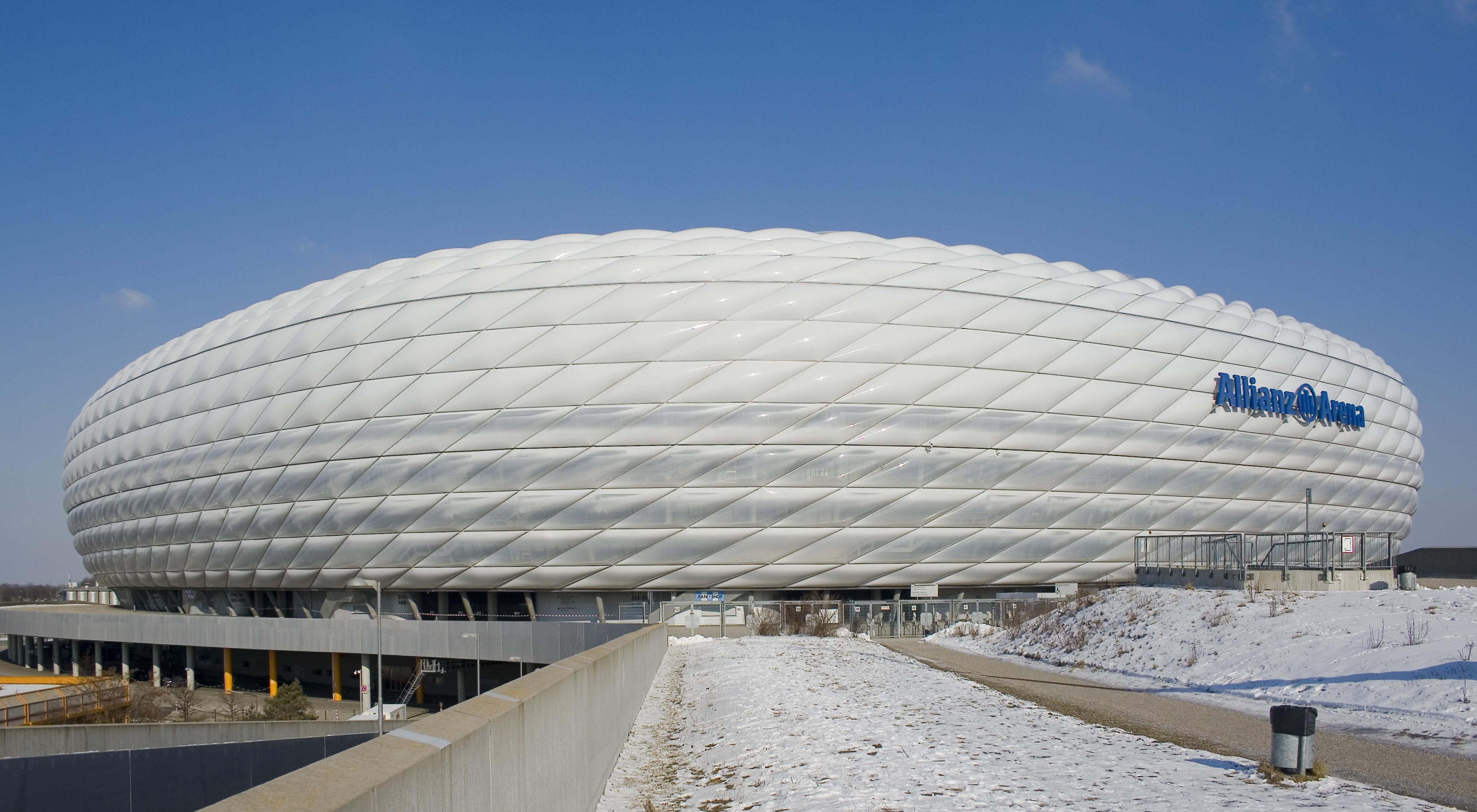
The Allianz Arena is one of the most recognizable stadiums in the world, thanks to its luminous, ever-changing exterior. Made up of 2,874 inflated ETFE plastic panels, the stadium’s facade looks like a glowing exoskeleton—almost as if it were a living, breathing entity from another world. The ability to change colors at will enhances its sci-fi aura, making it resemble an interstellar command center transmitting signals across the galaxy. During foggy nights, the stadium takes on an even more mysterious and ethereal presence, seemingly levitating above the ground like a high-tech spacecraft ready for liftoff. The seamless, bubble-like design makes it stand apart from conventional stadiums, giving it the visual appeal of a futuristic bio-dome. Inside, the high-tech lighting and state-of-the-art acoustic system further enhance the immersive experience, making every match or concert feel like a scene from a sci-fi thriller.
5. Volgograd Arena (Volgograd, Russia)
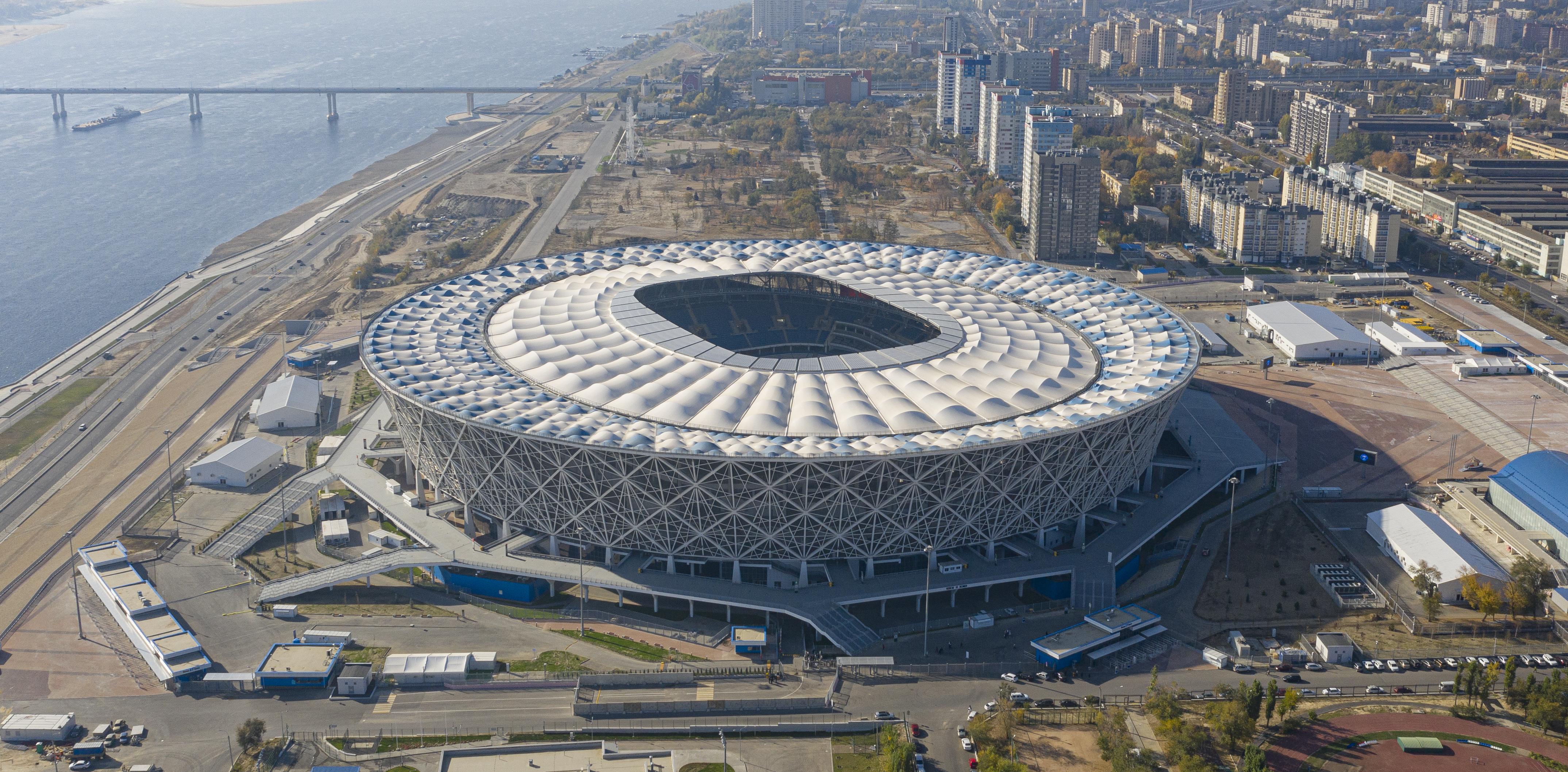
Volgograd Arena’s intricate, web-like exterior makes it look like a piece of futuristic machinery rather than a traditional sports venue. Inspired by traditional Russian weaving patterns, its steel lattice structure gives it a robotic, cybernetic aesthetic, as if it were a component of a giant mecha city. When illuminated at night, the pattern of crisscrossing beams forms glowing geometric shapes, making it resemble a massive energy field generator from a dystopian future. The stadium was built on the site of the historic Battle of Stalingrad, adding a layer of significance to its already awe-inspiring presence. The design integrates cutting-edge seismic protection and eco-friendly materials, blending history and advanced technology in a way that feels like something from a time-traveling civilization. From aerial views, the stadium looks like a futuristic reactor, pulsating with energy, ready to power an advanced society.
6. Estadio Akron (Guadalajara, Mexico)
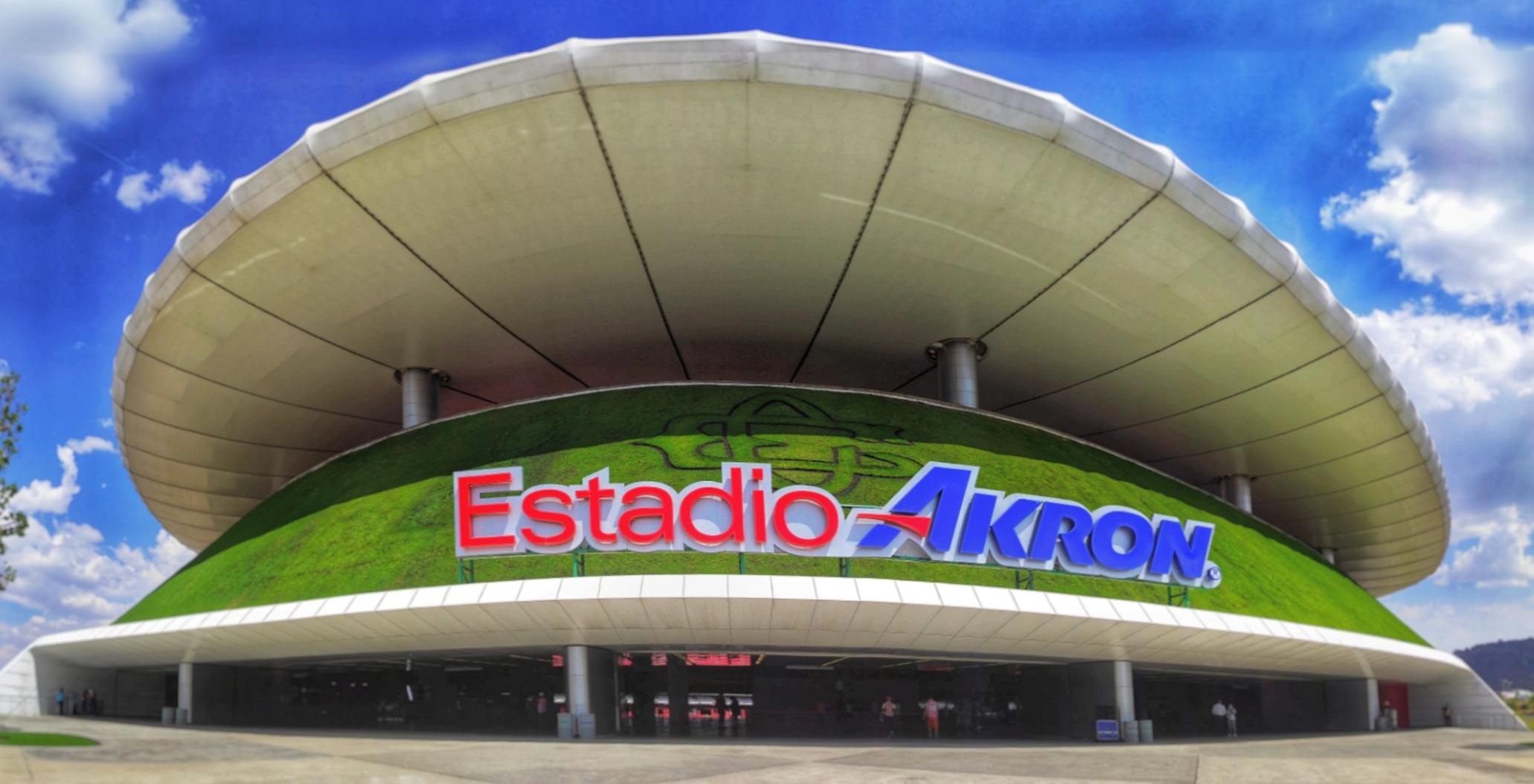
Estadio Akron appears less like a traditional stadium and more like a mysterious crater embedded into the landscape of an alien world. Surrounded by a lush, grass-covered slope, the stadium seamlessly blends into its surroundings, almost as if it naturally formed there over centuries. This organic-meets-futuristic design gives it a look reminiscent of hidden sci-fi colonies built into planetary surfaces in deep space exploration stories. The circular roof floats above the stadium like a hovering spacecraft, with open sections that allow natural light to filter through in a dramatic, cinematic way. At night, the stadium’s interior glows, creating the illusion that an extraterrestrial spacecraft has been activated. This unique fusion of nature and cutting-edge design makes Estadio Akron feel both ancient and futuristic—like an alien temple designed for unknown rituals.
7. Lusail Iconic Stadium (Lusail, Qatar)

A shimmering golden jewel rising from the desert, Lusail Iconic Stadium looks like a sacred temple from a lost, futuristic civilization. Designed for the 2022 FIFA World Cup, this stunning structure combines intricate geometric patterns with an enormous, bowl-shaped form, creating the illusion of a vast, celestial relic. The smooth, curved exterior is reminiscent of a futuristic spacecraft or an ancient artifact infused with cosmic energy, waiting to be activated. Lusail Iconic Stadium doesn’t just look futuristic—it operates like it too. Equipped with cutting-edge sustainable technology, the venue utilizes solar-powered cooling systems, advanced energy-efficient lighting, and intelligent waste management systems. The entire structure is a marvel of eco-conscious engineering, proving that futuristic stadiums don’t have to be wasteful—they can lead the way in sustainability. When illuminated at night, its intricate patterns shimmer like coded messages from an advanced society, reinforcing the stadium’s presence as a high-tech, interstellar marvel.
8. Japan National Stadium (Tokyo, Japan)

Japan National Stadium is a masterclass in blending tradition with futuristic innovation. Unlike many sci-fi-inspired stadiums that rely on metallic exteriors and neon lighting, this venue takes a subtler approach, evoking the aesthetic of a floating platform straight from a cyberpunk cityscape. Its massive, open-air structure, framed by a sophisticated, layered roof, appears almost weightless—like a levitating spacecraft dock that has been seamlessly integrated into the Tokyo skyline. The stadium’s intricate wooden latticework, inspired by traditional Japanese architecture, gives it a unique warmth while still maintaining a futuristic edge. This balance between past and future makes it feel like something that could exist in the world of Ghost in the Shell or Akira—a structure built for a highly advanced society that still honors its roots. With smart energy solutions, cutting-edge cooling technologies, and an emphasis on sustainability, Japan National Stadium is a beacon of the future, built with the wisdom of the past.
9. Ekaterinburg Arena (Yekaterinburg, Russia)
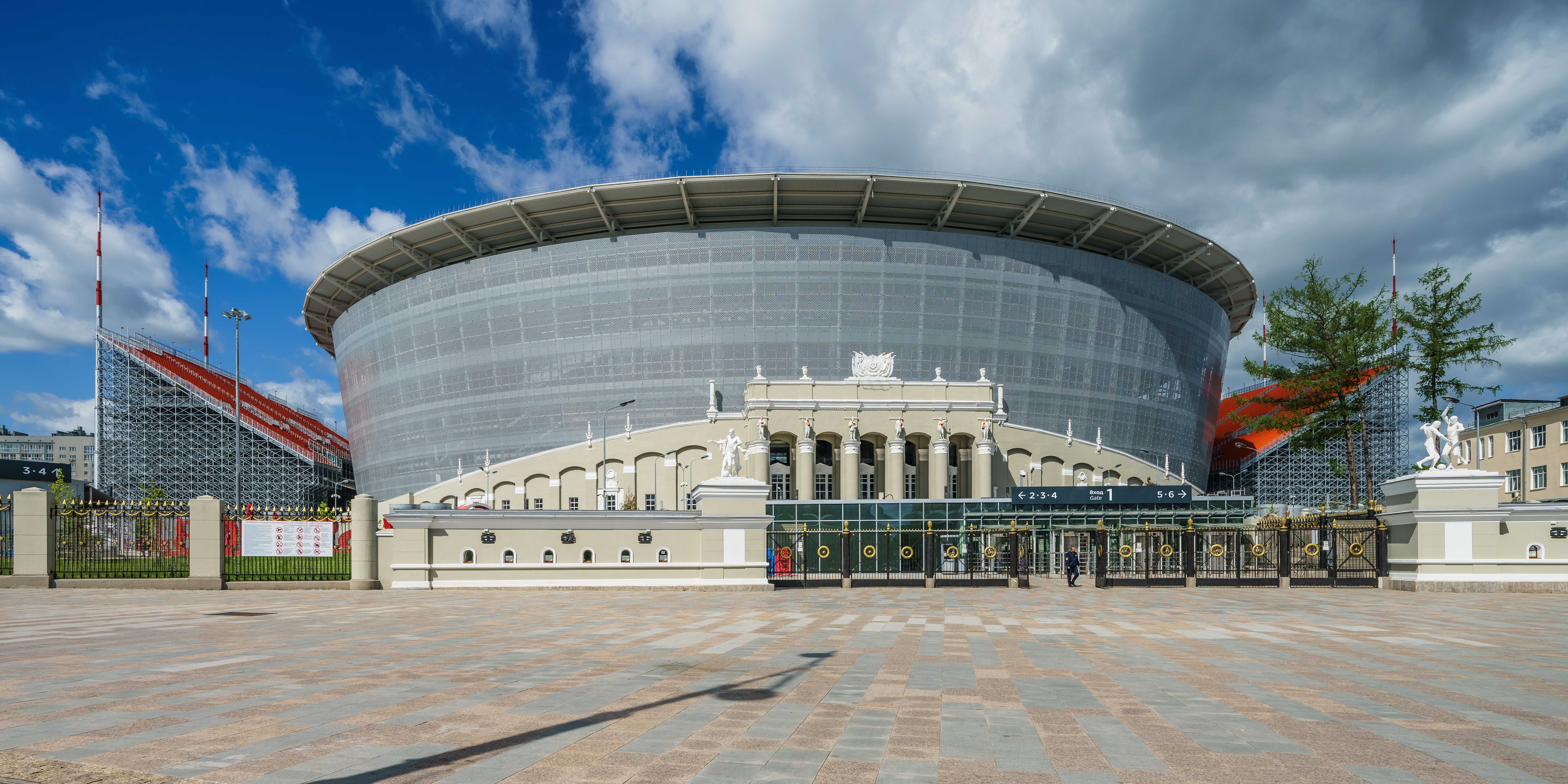
At first glance, Ekaterinburg Arena appears like a stadium caught in the middle of a time-travel experiment. While the main structure maintains a classical design, the two enormous grandstands extending beyond the original facade create a stark, futuristic contrast. These outstretched, almost floating sections look like they were imported from an advanced civilization and attached to the existing stadium, making it feel like a hybrid of two different eras. The effect is both bizarre and captivating—it’s as if Ekaterinburg Arena is in the process of evolving into something more advanced, growing new extensions like a cybernetic organism. At night, when the lights hit the metallic framework of these massive additions, they resemble docking bays for intergalactic starships. The stadium serves as a visual metaphor for the merging of old and new, symbolizing the evolution of sports architecture into something bold, unconventional, and undeniably futuristic.
10. Hangzhou Olympic Sports Center (Hangzhou, China)
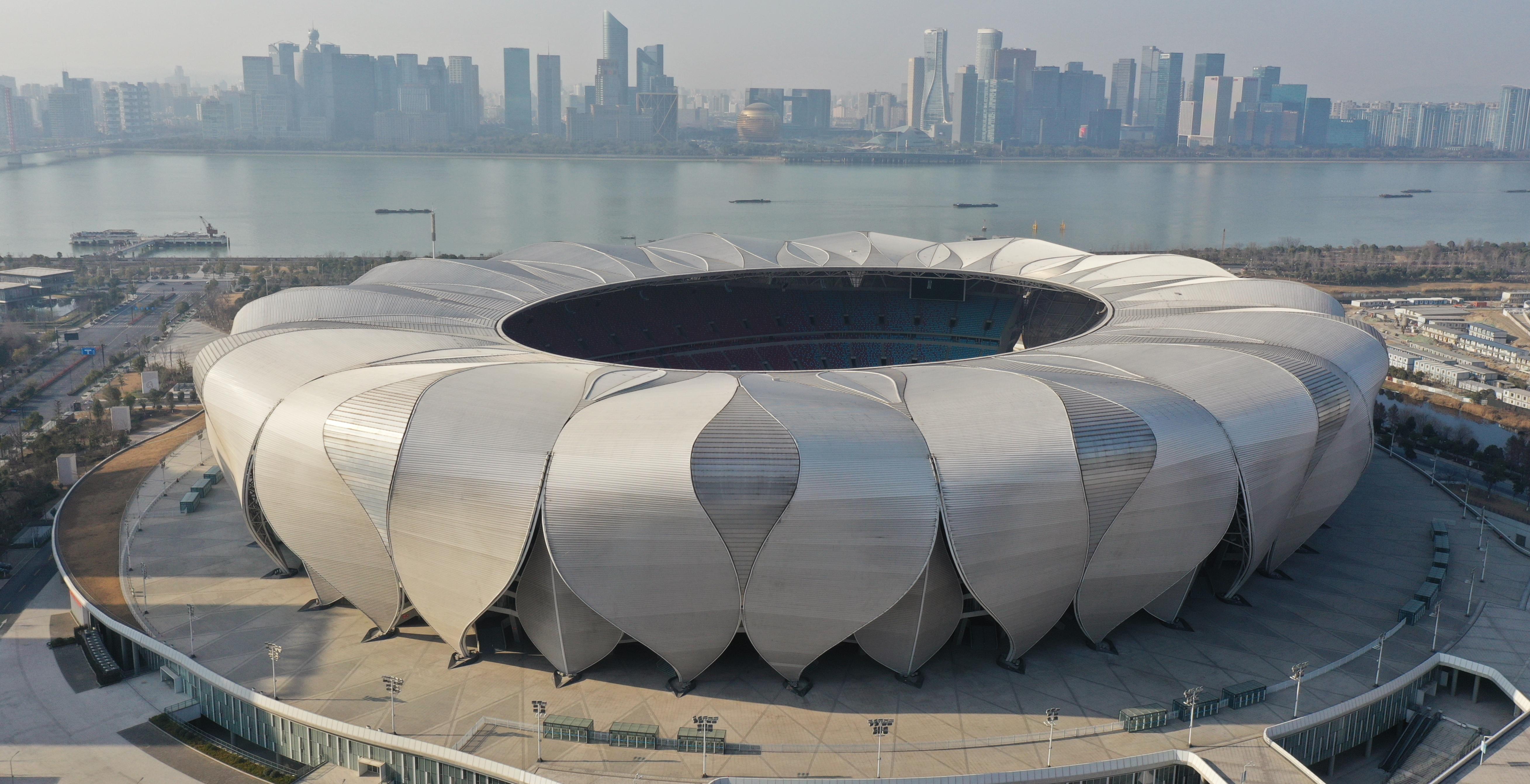
Nicknamed the "Lotus Stadium," this breathtaking venue looks like a giant, mechanical flower resting on the banks of the Qiantang River. Its design consists of massive petal-like panels that surround the stadium, creating the illusion of a futuristic bloom unfolding. The metallic sheen of these panels adds to the sci-fi aesthetic, making it look like an organic-mechanical hybrid—something that could easily exist in a Star Wars or Mass Effect universe. The petals aren’t just for show; they play a functional role in natural ventilation, reducing energy consumption while maintaining a comfortable environment inside. At night, the entire stadium transforms as LED lights illuminate the structure, giving it the appearance of an extraterrestrial flower pulsating with life. Whether viewed from above or the riverbank, Hangzhou Olympic Sports Center feels like a structure that belongs in the future, where nature and technology coexist in perfect harmony.
11. Fisht Olympic Stadium (Sochi, Russia)
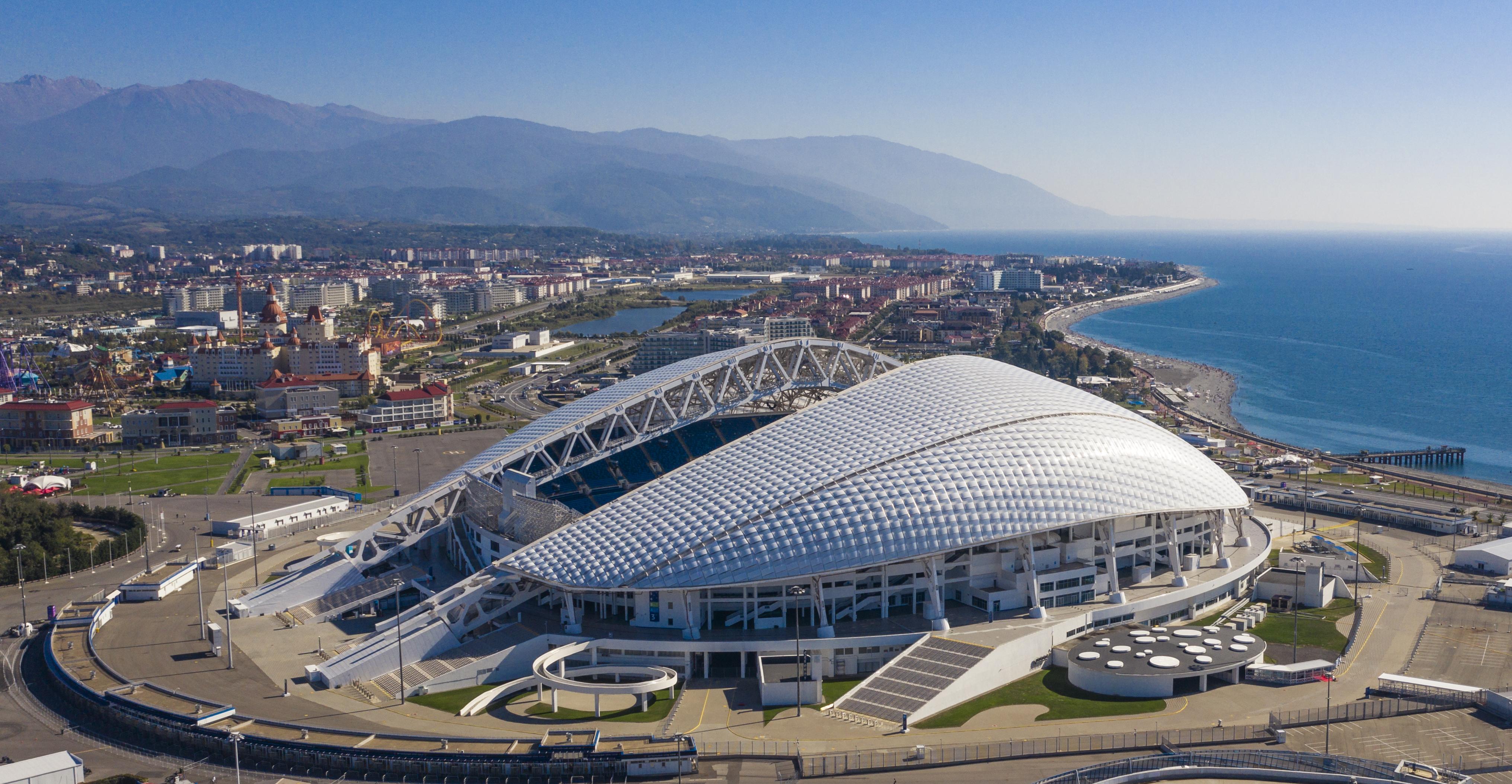
Fisht Olympic Stadium looks like a sleek, futuristic spacecraft resting on the shores of the Black Sea. Originally built for the 2014 Winter Olympics, this stadium has an otherworldly, aerodynamic design, featuring a translucent shell that glows with LED lighting at night, creating the illusion of a hovering starship. Its curved, wave-like structure mirrors the movement of water, reinforcing its sci-fi aesthetic. The stadium's roof, inspired by the snowy peaks of the Caucasus Mountains, appears to float weightlessly, giving it a gravity-defying presence. Advanced lighting systems transform the venue into a shimmering beacon, making it look like a luminous energy core from a dystopian future. Whether hosting the Olympics, World Cup matches, or concerts, Fisht Stadium continues to captivate with its blend of natural inspiration and ultra-modern engineering—truly a stadium that feels like it belongs in a distant galaxy rather than on Earth.
12. Stadion Energa Gdańsk (Gdańsk, Poland)
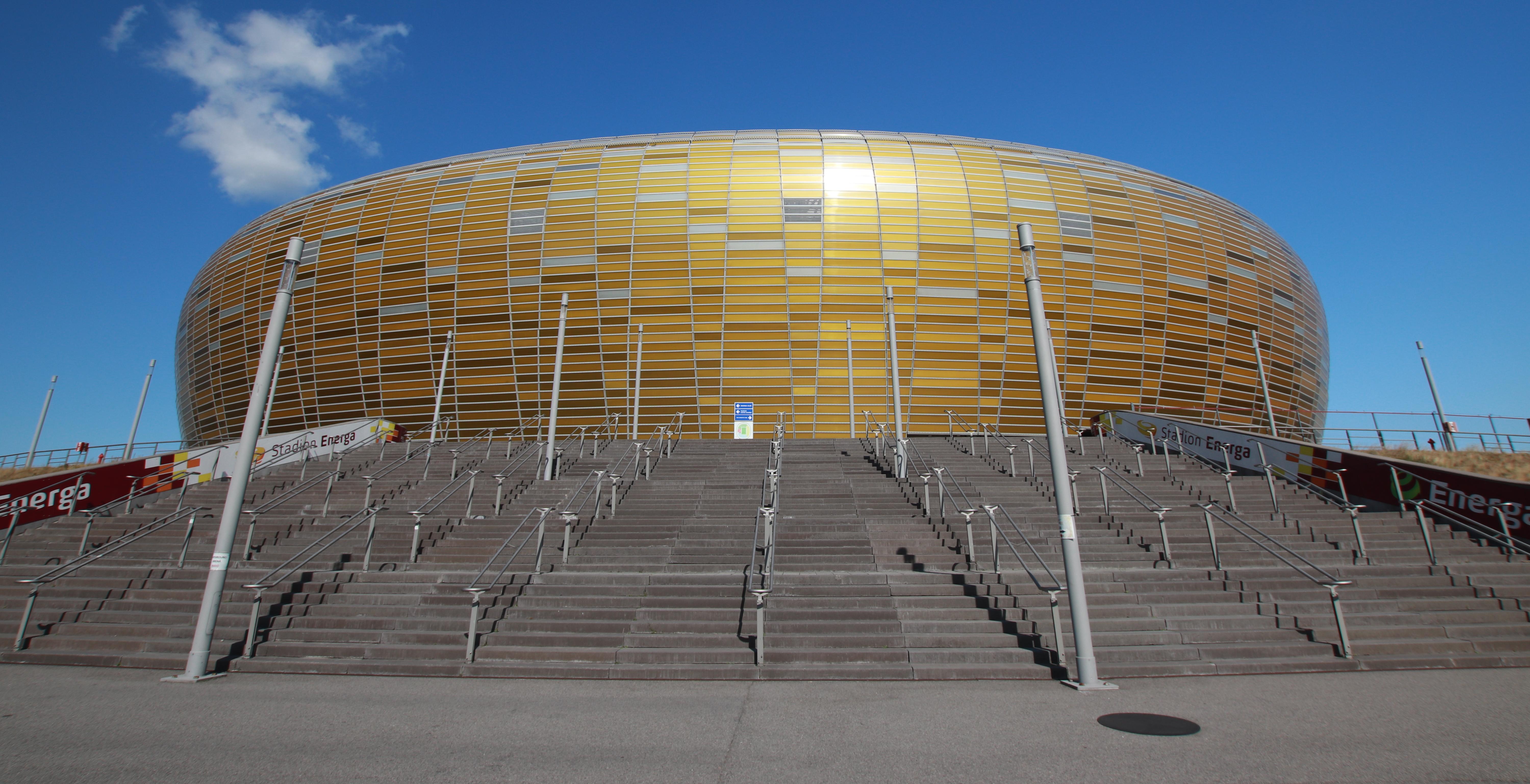
Nicknamed "The Amber Stadium," Stadion Energa Gdańsk shimmers like a crystallized power source left behind by a long-lost alien civilization. Clad in over 18,000 polycarbonate panels tinted in a gradient of gold, bronze, and deep honey tones, the facade mimics the ancient beauty of fossilized amber—but scaled up to monumental proportions. The entire structure glows with an almost molten luminosity when illuminated from within, giving the impression of a slumbering energy core waiting to be awakened. Located near the Baltic coast, the stadium's golden hue reflects the maritime history of the region while boldly leaning into sci-fi territory. Its elliptical, shell-like form looks aerodynamic and alien, as though it was aerodynamically engineered for interstellar travel before being repurposed as a football venue. During foggy evenings, it appears to float above the earth, surrounded by its own luminous aura. Whether you see it as a giant resin artifact or a futuristic engine charging up, one thing’s for sure: Stadion Energa Gdańsk is one of the most visually mesmerizing stadiums on the planet.
13. Avicii Arena (Stockholm, Sweden)

Avicii Arena, formerly known as the Ericsson Globe, looks less like a stadium and more like a planetary research outpost dropped into Stockholm by an advanced alien species. As the largest spherical building in the world, its perfectly round silhouette dominates the city skyline—gleaming white by day and dramatically illuminated by night. The structure is so flawlessly orb-like that it has been officially designated as the Sun in Sweden’s enormous national solar system model, with other cities housing scaled-down planetary markers. The minimalist exterior hides a high-tech interior, capable of hosting concerts, ice hockey, and international spectacles. The spherical form isn't just aesthetic—it creates incredible acoustics and symmetry inside, enhancing the feeling that you're not in a stadium at all, but in a planetary chamber or spacefaring dome. When lit from within during evening events, the arena glows like a beacon in the void—a cosmic object humming with energy. Renamed in honor of the late artist Avicii, the arena has become both a cultural icon and a futuristic monument, fusing geometry, emotion, and science-fiction scale into a single, unforgettable structure.
14. Borisov Arena (Barysaw, Belarus)
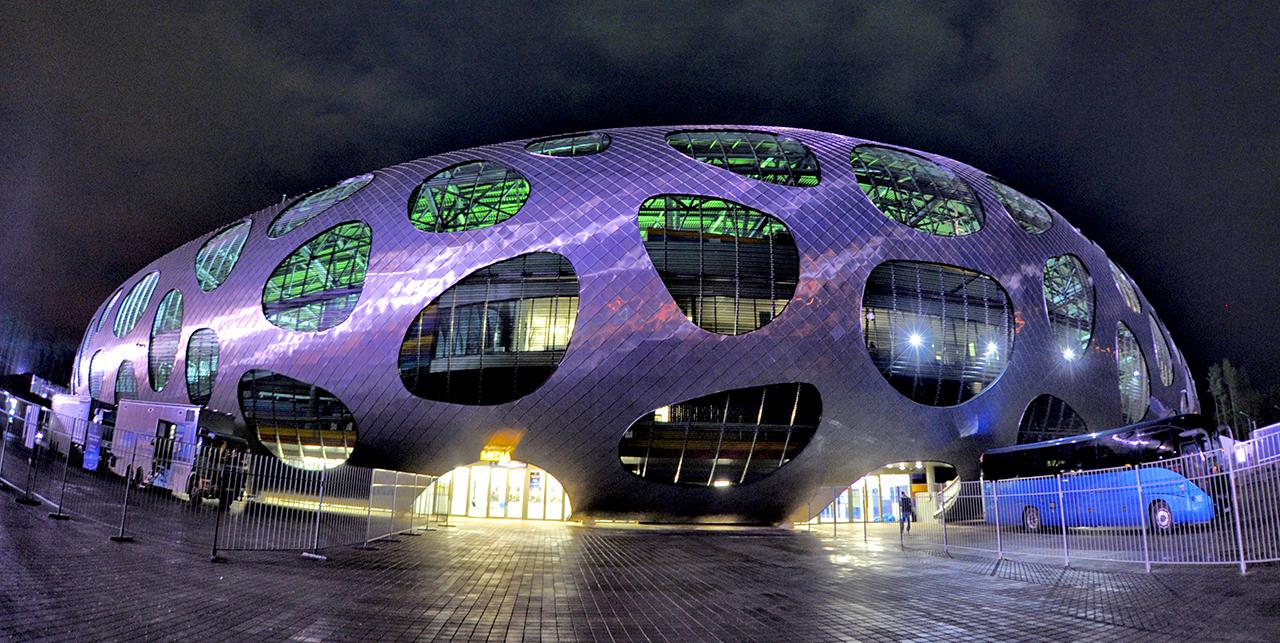
Borisov Arena doesn’t look like it was built—it looks like it hatched. With an exterior that resembles a pockmarked alien egg, this Belarusian stadium is one of the most unconventional structures in the world of sports. Its irregular, organic form is wrapped in a perforated metallic shell, filled with massive circular voids that give it the look of something alive—almost like it’s breathing. At night, those “bubbles” emit soft glows from the interior lighting, adding to the illusion that the stadium is pulsing with some kind of bioluminescent energy. From a distance, the arena appears like a seed pod from a sci-fi forest or a mothership resting quietly in the woods, waiting for activation. The structure defies symmetry and standard design logic, embracing asymmetry and negative space in a way that feels both alien and avant-garde. Inside, the undulating forms continue with curved seating and fluid architectural lines. Borisov Arena may not seat the most fans, but it leaves the strongest impression—an enigmatic fusion of natural patterns and extraterrestrial aesthetics that challenges what we expect a stadium to look like.
15. National Stadium (Kaohsiung, Taiwan

Also known as the “Dragon Stadium,” Kaohsiung National Stadium coils through southern Taiwan like a living organism. Designed by renowned architect Toyo Ito, the structure’s sweeping, spiral form mimics the movement of a serpent or a winding river—futuristic not just in function, but in symbolism. Its skin is covered with 8,844 solar panels, making it the first stadium in the world to be almost entirely powered by renewable energy. This isn’t just a venue; it’s a living, breathing piece of environmental architecture. From the air, the stadium looks like a giant, scaled creature curled around the playing field—half dragon, half spacecraft. The open, flowing form allows wind to move freely through the structure, minimizing the need for artificial cooling. The roof’s solar panels don’t just power the stadium—they actively feed energy back into the grid, making it a model of sustainable, future-forward design. Blurring the lines between organic and artificial, natural and technological, Kaohsiung National Stadium feels less like a product of modern architecture and more like something grown in a lab on a terraformed planet.
15. Shenzhen Bay Sports Center (Shenzhen, China)

Nicknamed the "Spring Cocoon," Shenzhen Bay Sports Center looks like it was grown in a high-tech lab rather than built by human hands. Its futuristic, webbed exoskeleton wraps around the structure like a metallic organism, giving it an organic-meets-industrial aesthetic straight out of a sci-fi world. The flowing, asymmetrical curves of the roof resemble something between a spaceship in mid-transformation and a piece of avant-garde bio-architecture. Designed to host a variety of sporting and cultural events, the center includes a stadium, arena, and swimming complex, all unified under the same alien-like shell. The translucent panels and perforated steel framework allow natural light to filter through by day, while at night, the entire complex glows with a soft, almost ethereal light—making it look like a living structure powered by an internal energy source. The architectural design is as functional as it is otherworldly, with advanced ventilation systems and energy-efficient features that align with Shenzhen’s identity as a cutting-edge tech hub. From the air, the stadium resembles a futuristic chrysalis—a symbol of transformation, progress, and what’s possible when technology meets visionary design. Shenzhen Bay Sports Center doesn’t just host events—it feels like it’s preparing for interstellar departure.
16. Krasnodar Stadium (Krasnodar, Russia)

Krasnodar Stadium feels like it belongs to a utopian civilization where precision, symmetry, and spectacle reign supreme. From above, its perfect oval form and gleaming white stone façade resemble a futuristic coliseum—like something designed by an advanced society trying to recreate ancient Rome with alien technology. But it’s what happens inside that truly gives it a sci-fi edge. Step through the gates, and you’re greeted by one of the most visually immersive environments in sports. The interior boasts a 360-degree ribbon screen that wraps around the entire upper tier, creating the illusion of a continuous digital sky. During events, this screen becomes a living canvas—flashing high-resolution visuals, animations, and atmospheric effects that make the stadium feel less like an arena and more like the command deck of a space station. The minimalist design, clean lines, and cutting-edge lighting make the stadium feel sleek and intelligent—built not just for spectators, but for sensory immersion. Designed by German architects GMP, Krasnodar Stadium combines classical monumentality with high-tech execution, resulting in a structure that looks serene by day and spectacularly futuristic by night.
17. Nou Mestalla (Valencia, Spain)
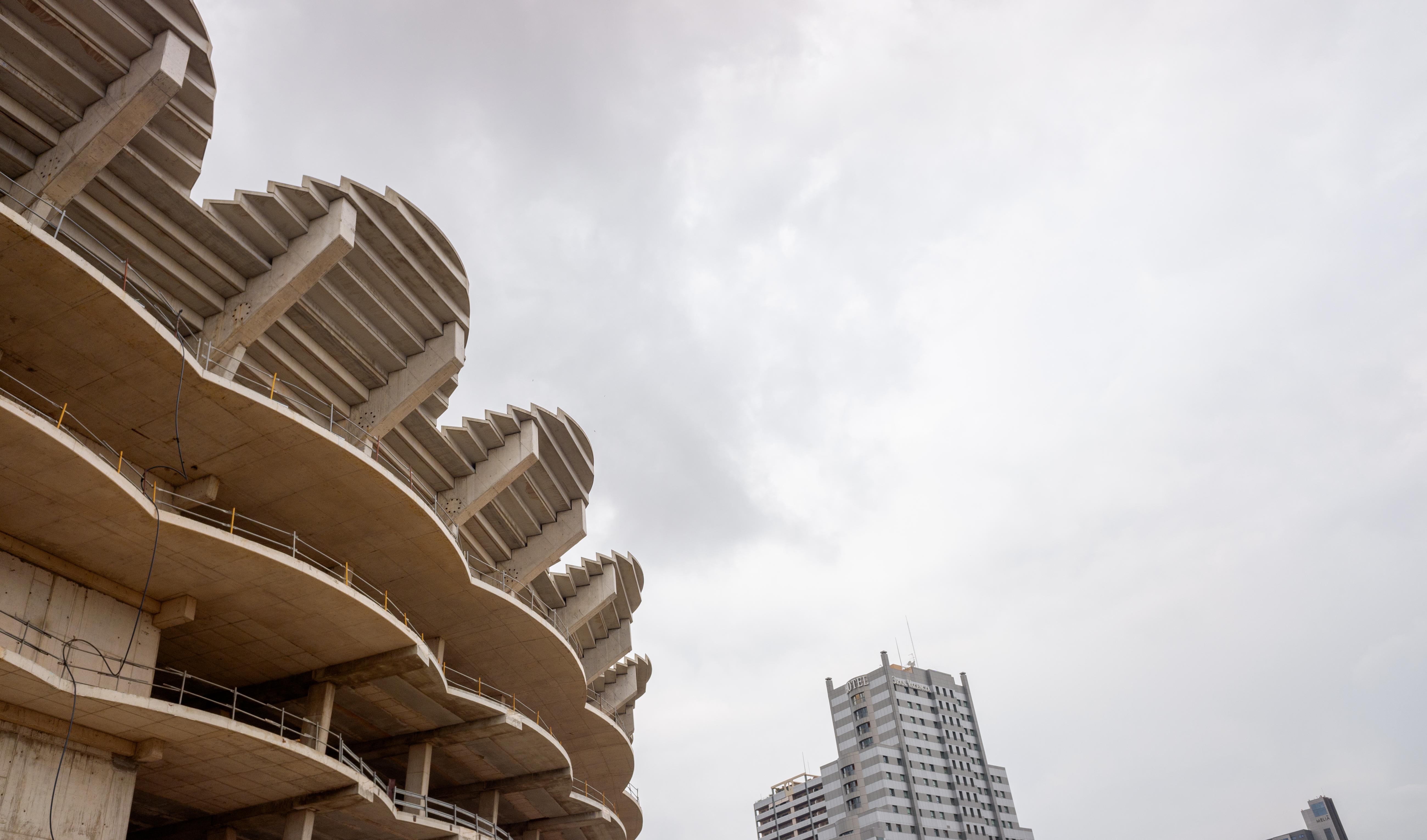
Though still awaiting completion, Nou Mestalla already looks like a relic from the future—a partially unearthed alien structure hiding in plain sight. Its skeletal, layered design resembles the exposed ribcage of a colossal spaceship, with towering concrete fins and sharp, metallic contours that give it an imposing, otherworldly presence. If most stadiums feel like entertainment venues, Nou Mestalla feels like a monument left behind by an advanced civilization. Originally envisioned as one of the most futuristic stadiums in Europe, the design features bold geometry and layered terracing that gives it the appearance of a dystopian temple—part ancient ruin, part sci-fi command center. Even in its unfinished state, it’s strikingly photogenic, attracting architecture enthusiasts and travelers drawn to its eerie, post-modern allure. With plans to include solar energy systems, smart crowd flow design, and high-tech interiors, Nou Mestalla is poised to become a cutting-edge landmark once construction resumes. But even now, as a work-in-progress, it captivates the imagination—an architectural mystery that looks like it belongs in the backdrop of a futuristic epic.
18. Čyžoŭka-Arena (Minsk, Belarus)
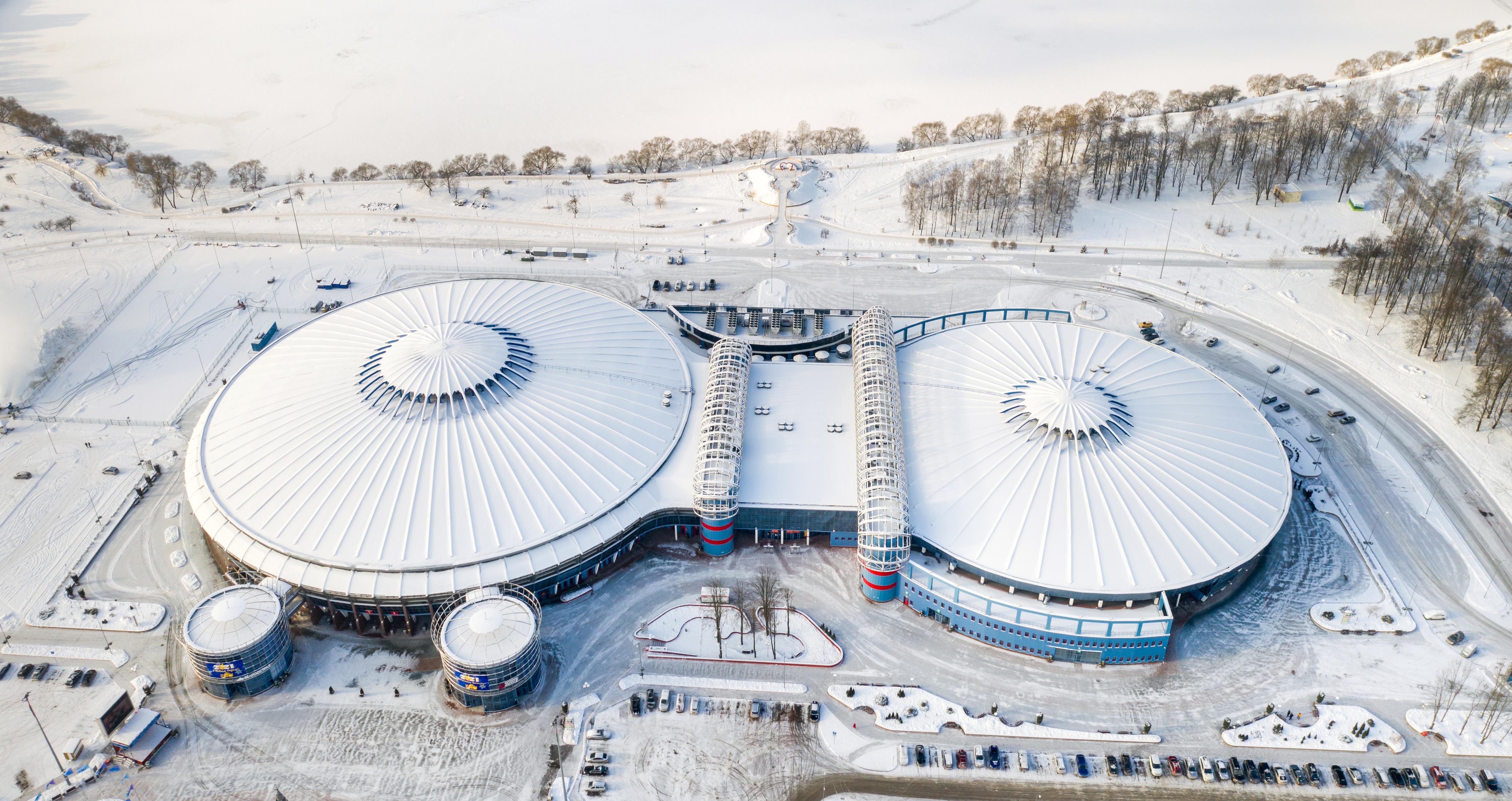
Čyžoŭka-Arena looks like it could double as a planetary research station or an off-world habitat designed by a minimalist alien race. With its low, sweeping curves and reflective, silver-blue panels, the structure hugs the ground like a sleek mothership waiting for takeoff. The segmented dome design gives it a modular, space-age aesthetic—something between a lunar base and a bio-dome from a utopian sci-fi colony. By day, it shimmers like a polished spacecraft under the Belarusian sky. At night, glowing LED accents highlight its clean geometry, transforming the arena into a luminous capsule that feels completely detached from its urban surroundings. Inside, the futuristic feel continues with soft lighting, fluid architecture, and smooth transitions between zones—making it feel more like a high-tech vessel than a traditional ice hockey and multi-sport venue. Čyžoŭka-Arena may not be the largest stadium on this list, but it punches above its weight in visual impact. Its sleek, futuristic design and understated elegance make it feel like it was built not just for sports—but for the arrival of something truly otherworldly.
19. Climate Pledge Arena (Seattle, USA)
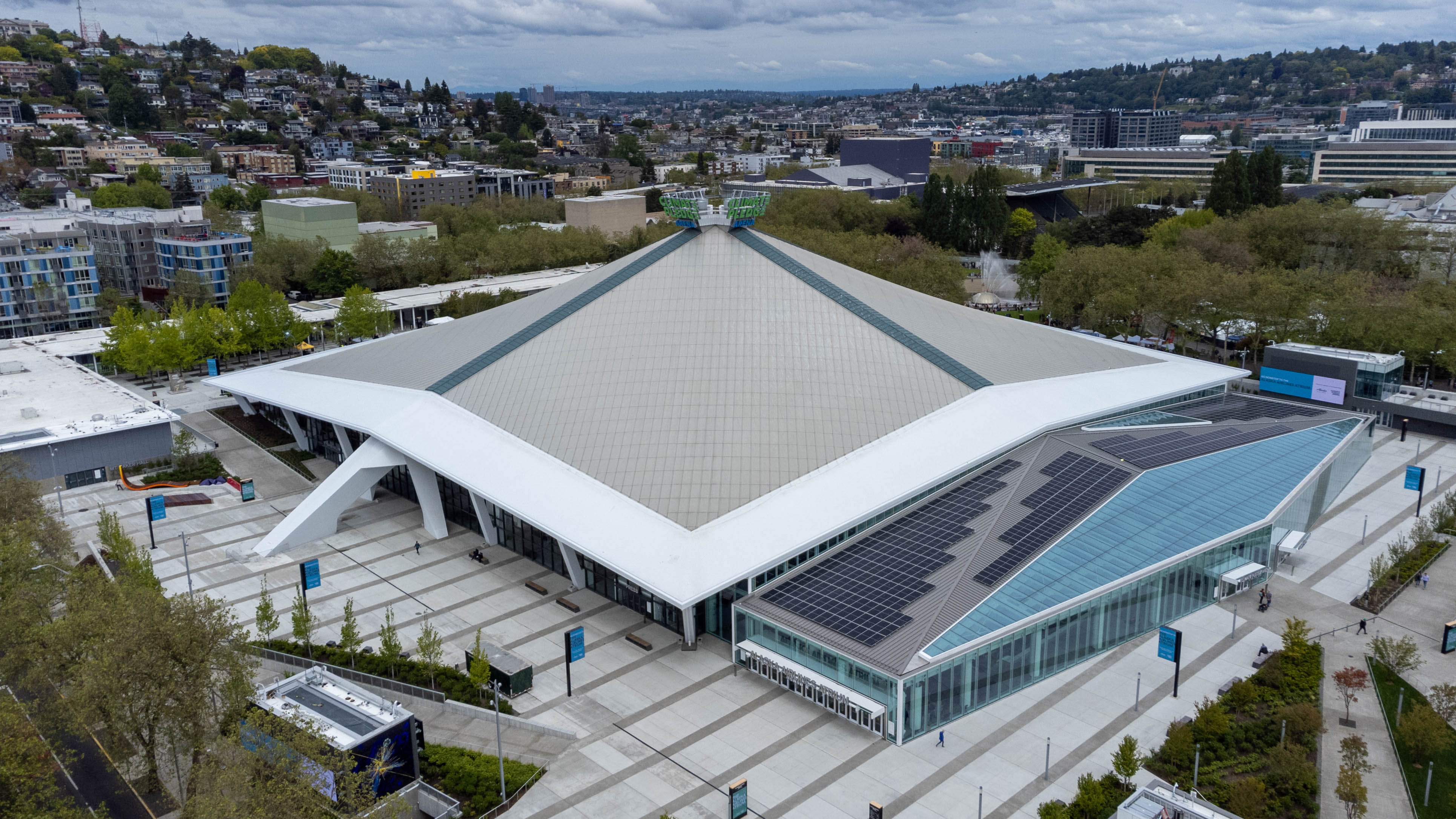
Climate Pledge Arena doesn’t scream futurism—it whispers it with cool confidence. Subtle yet revolutionary, this reimagined Seattle landmark is less a spaceship and more a sleek Earth-bound command center for a sustainable future. With its angular roof hovering like a stealth drone above the Pacific Northwest skyline, the structure looks like it was designed by an eco-conscious civilization lightyears ahead of our own. Originally built for the 1962 World’s Fair, the arena was reborn with an ambitious goal: to be the first net zero carbon-certified arena in the world. Everything about it feels engineered for the next chapter of humanity—from its rainwater-harvesting ice system and zero-waste operations to its fully electric infrastructure and sustainably sourced materials. It’s a rare example of retrofuturism in action: preserving the past while fully embracing the technology and responsibility of the future. At night, the arena glows with understated elegance, framed by curated LED lighting and crowned by its iconic hyperbolic paraboloid roof—like a beacon for green innovation. Inside, it’s just as advanced: adaptive lighting, state-of-the-art ventilation, and immersive audiovisuals deliver an experience that feels like a clean-energy cathedral. Climate Pledge Arena doesn’t just host concerts and hockey games—it stands as proof that stadiums of the future won’t just look cool; they’ll act cool, too.
20. National Stadium (Warsaw, Poland)

The National Stadium in Warsaw rises from the banks of the Vistula River like a woven spacecraft touching down in the heart of Poland. With a façade wrapped in a dynamic red-and-silver pattern resembling interlaced metallic threads, the stadium looks less like a sports venue and more like a giant, spinning turbine or high-tech reactor—one designed to pulse with energy and life. Its unique exterior is inspired by the Polish national colors and traditional basket weaving, but the result is anything but old-fashioned. The structure’s spiked canopy, supported by massive steel masts and a central compression ring, fans out like a digital flower in bloom or the ribbed shell of a sci-fi shield generator. From certain angles, it appears to hover—an alien vessel mid-landing, blending advanced geometry with national pride. The interior is equally dramatic, featuring a retractable roof made from a translucent, high-tension membrane that folds inward like a mechanical iris, revealing the sky with the press of a button. During night events, the whole stadium lights up with programmable LEDs, turning it into a glowing, color-shifting beacon—an ultra-modern coliseum ready for any spectacle. National Stadium Warsaw combines cultural symbolism with space-age design, creating a venue that honors tradition while looking light-years ahead. It’s not just a home for football and concerts—it’s a landmark that bridges the past and the future in radiant, architectural form.
21. Krestovsky Stadium (Saint Petersburg, Russia)
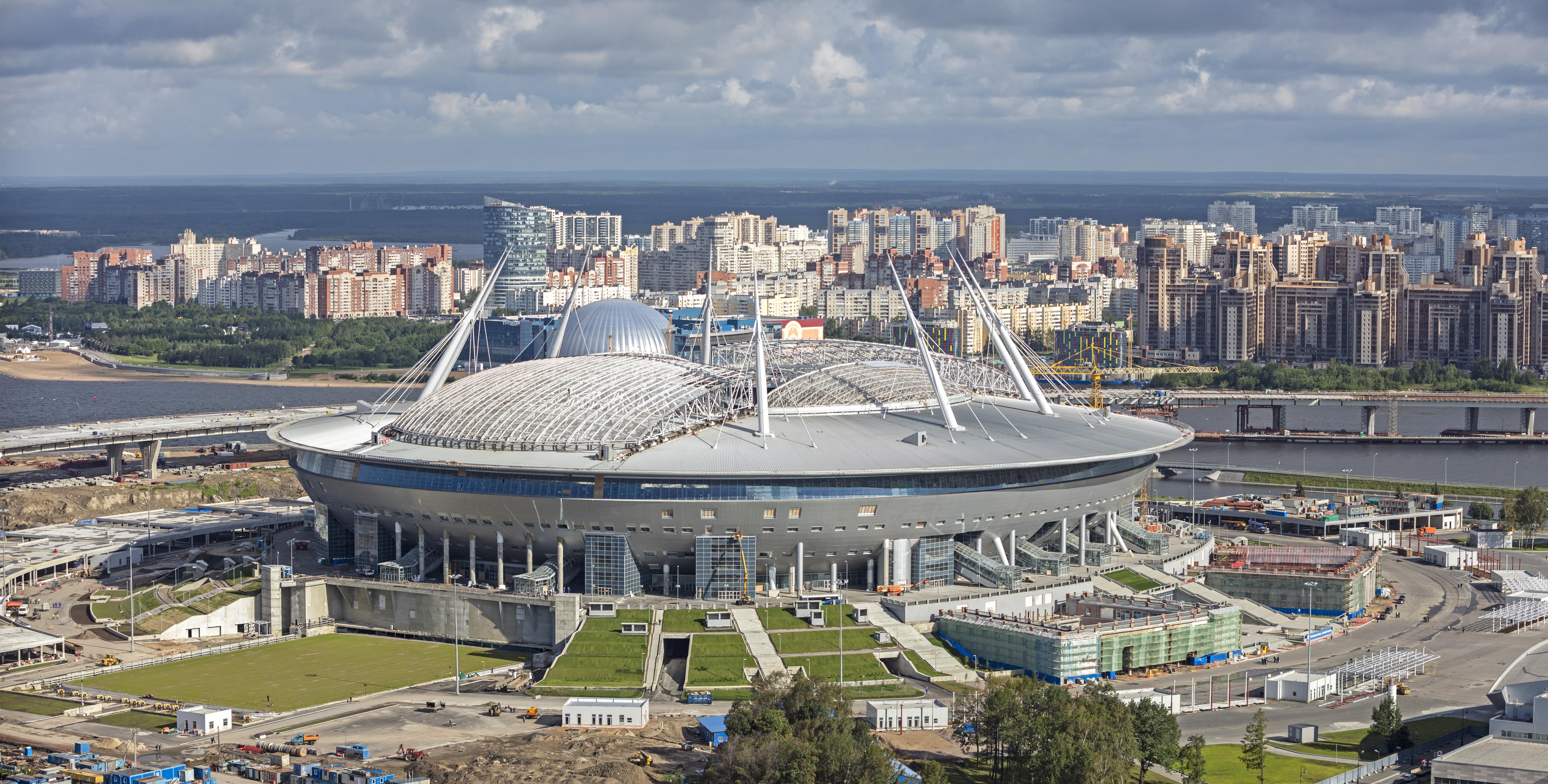
Krestovsky Stadium, also known as Gazprom Arena, doesn’t just sit on the landscape—it hovers above it like a visiting spacecraft. Perched on the edge of the Gulf of Finland, this colossal, metallic titan looks more like a landing zone for interstellar travelers than a traditional sports venue. With its retractable roof shaped like a sleek alien shell and towering spires that resemble antennae reaching skyward, the stadium exudes an energy that’s more interplanetary base than football arena. Designed by renowned Japanese architect Kisho Kurokawa, the stadium draws inspiration from space-age aesthetics and modular megastructures. It’s often compared to a spaceship both for its form and for the way it integrates technology—featuring a fully retractable roof and a movable pitch that can transform the space from football ground to concert arena with mechanical precision. The result is a venue that seems to shift and adapt like a machine—ready to reconfigure itself for any kind of cosmic gathering. When illuminated at night, with glowing lights tracing its curving silhouette, Krestovsky Stadium looks like it's preparing for liftoff. The reflection of its lights on the surrounding water only enhances the sci-fi illusion, creating the image of a ship suspended between two worlds. Massive, imposing, and unmistakably futuristic, Krestovsky isn’t just one of the most expensive stadiums ever built—it’s one of the most otherworldly.
A Glimpse Into the Future

From luminous alien structures to gravity-defying, shape-shifting facades, the stadiums on this list don’t just push the boundaries of architecture—they redefine them. These futuristic arenas serve as a testament to human ingenuity, proving that the imagination isn’t just reserved for the realm of science fiction. Each of these venues is a fusion of art, technology, and sustainability, showcasing a vision of the future where stadiums are not merely places to watch sports but immersive, otherworldly experiences. As we continue to develop advanced materials, smart technology, and eco-friendly innovations, stadiums will only become more futuristic—perhaps even incorporating AI, holographic projections, or modular, floating designs. While these sci-fi-inspired structures may seem ahead of their time, they remind us that the future isn’t something we wait for—it’s something we build. Whether it's a glowing arena that looks like a spaceship or a stadium that merges with nature like an alien colony, one thing is certain: the stadiums of tomorrow are already here, and they are spectacular.



